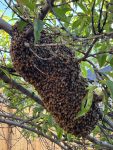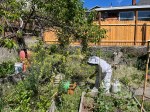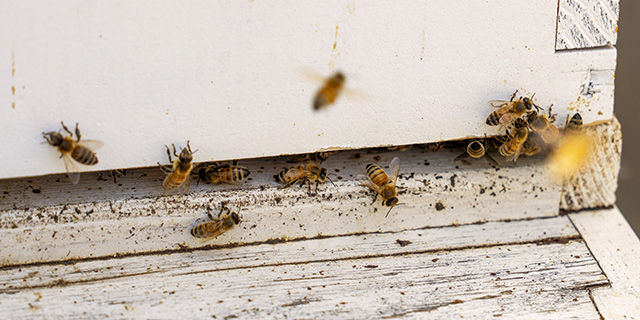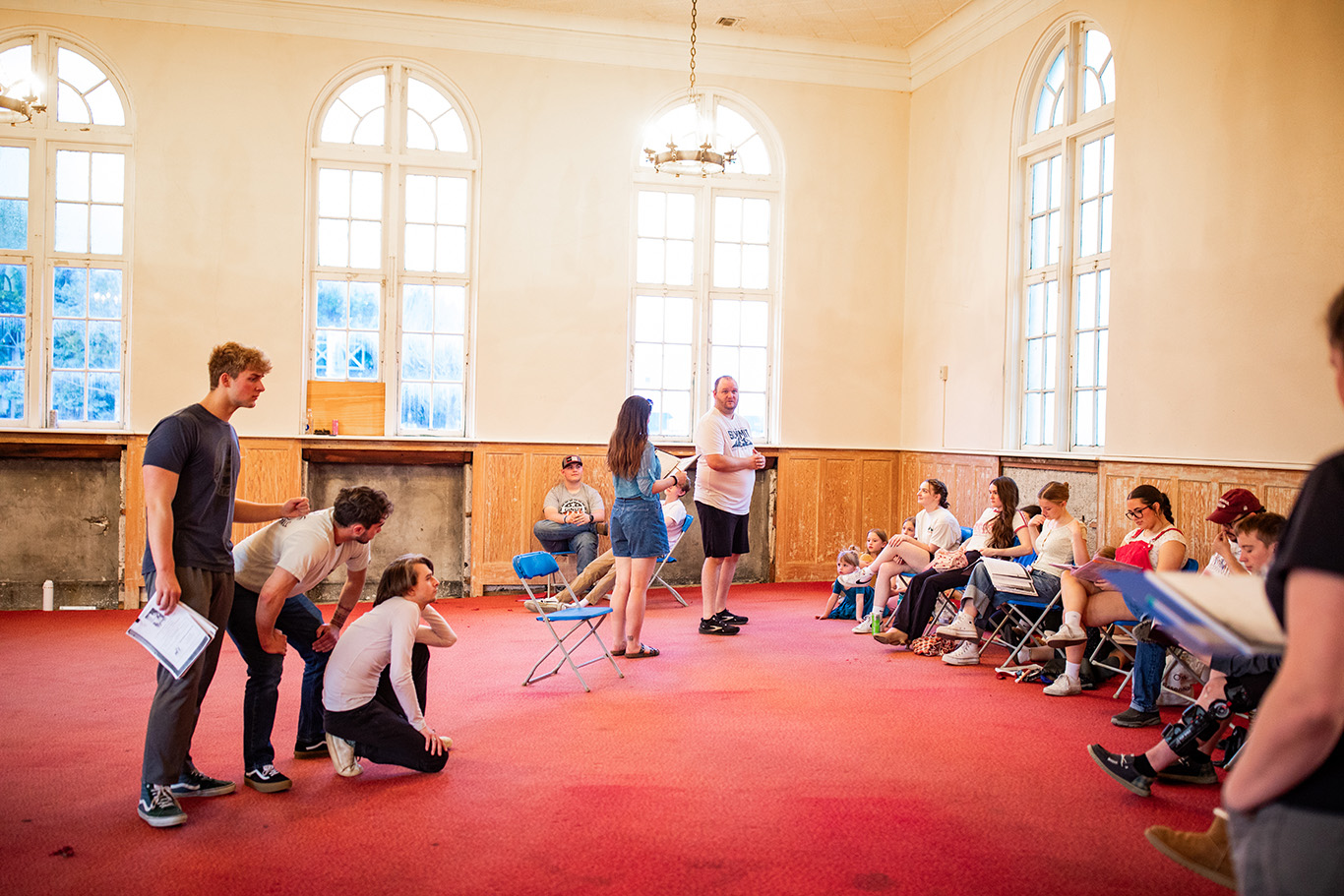Meant to ‘bee’
Published 6:00 am Wednesday, June 11, 2025





Blue Mountain Community College teachers save swarm of honeybees
PENDLETON — Early May had North Hill abuzz in Pendleton, as a swarm with at least a few hundred to a thousand bees searched for a place to call home.
Gary Parker was working in the yard behind his home May 4 when his neighbor asked him about the bees under the canopy of his peach tree. He didn’t know what the person was talking about until he glanced up and saw a swarm of bees clinging to the branch.
After backing up about 10 feet so as not to disturb the quiet, resting bees, Parker reached out to friends and family who have experience beekeeping to ask what to do. They told him the bees likely split from their main hive because it was too big, and they may just end up finding a new location, but they also might die if they can’t find a home quickly.
“I know native bees are struggling and also the honeybee population is struggling, which pollinates a lot of the foods we eat,” Parker said, “so I thought it was worth saving them.”
Enter Sascha McKeon.
McKeon is a colleague of Parker’s at Blue Mountain Community College, where Parker teaches mathematics and McKeon teaches biology. She also is an amateur beekeeper.
“In the spring, when hives start producing a lot, if they run out of space, they’ll kind of section off and move along,” she said. “They’ll raise their own queen and send her off on her way to seed someplace else and so I think that’s who we’ve caught.”
Saving the bees
During the course of a day or so, McKeon and Parker tried three times to get the happy, calm bees into a box so McKeon could bring them to the college to build their hive. First, Parker cut the branches of his tree off while the bees were attached, attempting to get them into a plastic bin, which wasn’t quite big enough to fit them all.
“Once we started cutting the branch, they started making different noises and you can tell by the sound of their hum whether it’s a happy buzz or a noise that’s a little irritated,” McKeon said.
Either way, the swarm flew away, with Parker and McKeon following along for about half an hour.
“They would just go around houses and trees, so what must have happened is they sent out scouts to look for a suitable place,” Parker said.
“When there are that many and they’re abundant, you can hear them coming from quite a ways, so it can be a little disconcerting and I bet we look like a sight,” McKeon said. “I’m allergic to bees, so I have a full suit, and so I look like a little space marshmallow walking down Fourth Street.”
Eventually, the bees settled on an underground box with the water controls for an irrigation system. Parker said they clung to the lid of the irrigation box, making it easy to shake them into a cardboard box with a lemongrass-scented towel at the bottom. McKeon figured as long as they got the queen into the box, the rest would end up there, too, so she and Parker left the box overnight. The next morning, all but a few of the bees had made their way in.
“I sealed it up and drove them in the passenger seat of my car,” said McKeon. “The whole time, just ‘zzzz.’”
Parker said he thinks people might be surprised to learn that bees not protecting a hive aren’t aggressive.
“The branches were shaking while I was trying to cut them, and the bees did not bother me,” he said. “Even when they were swarming, I could go right up to the box and none stung me.”
Keeping the bees
For McKeon, the experience was different than other times she’s saved a hiveless swarm because it took so many attempts to get them into a box. She didn’t have a hive at the time, and wasn’t planning to start caring for another due to her schedule, but she felt a pull once she saw this swarm.
“When I started collecting and they took off, I didn’t realize how much I was going to miss them,” she said. “They’re happy ladies. My office is nearby, so I get to watch ’em throughout the day.”
The hive is about 80% female, said McKeon, and the bees will fly about 5 miles to pollinate various plants.
“They’re cute and they’re so helpful for our ecosystems,” she said. “It’s a beautiful society where everybody takes care of each other.”
McKeon said she knows not everyone can take care of a hive, but there are small steps people can take to help the bees beyond planting pollinators, which is a common recommendation. She said they eat dandelions in the spring, so letting those grow is nice, and they will rest on and drink from bowls with water and a sponge during their flights.
Bees pollinate the vast majority of our crops, McKeon, “and so any little bit that we can do to help keep their numbers up keeps our lives happy.”
The U.S. Department of Agriculture says about 1 in every 3 bites of food — about 35% of food crops — depends on pollinators.
McKeon only has the one hive at the BMCC campus now, but she’s hoping to make her equipment accessible throughout the community. The equipment includes a centrifugal force honey extractor and a wax melting box. She said she’s using it about once a season, so “it could easily be shared” with other beekeepers in the community. Those interested in learning more or being kept in the loop about developments can reach out to McKeon at smckeon@bluecc.edu.










